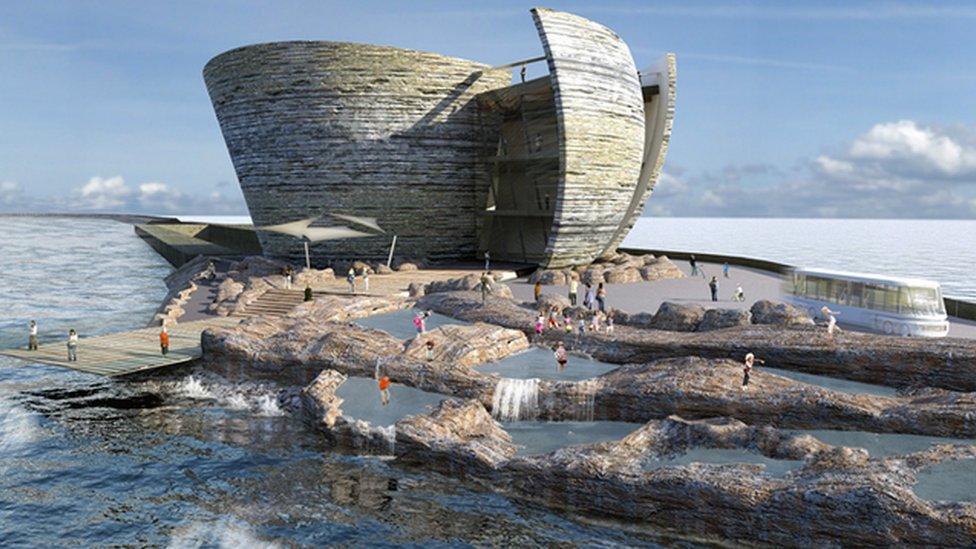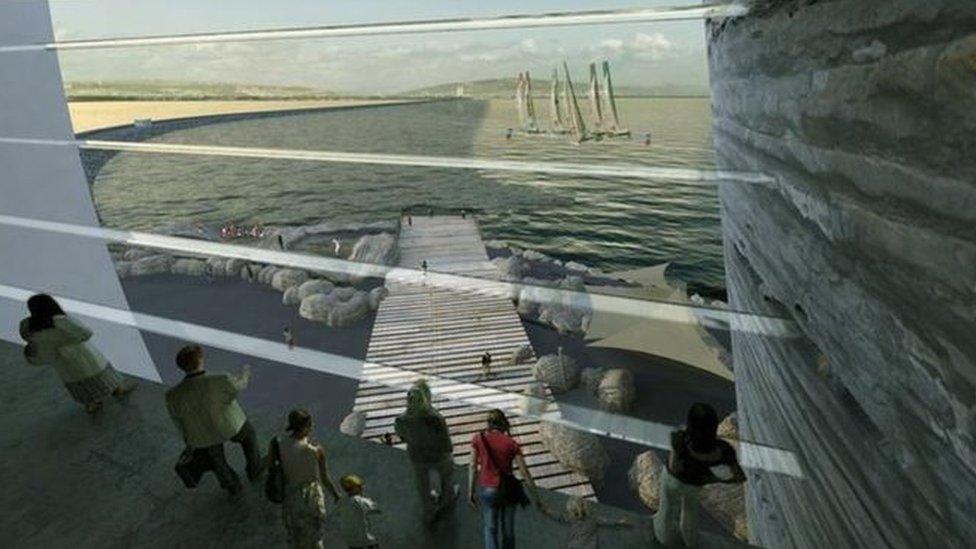Swansea Bay tidal lagoon fish death figures 'misleading'
- Published

The developers of the proposed Swansea Bay tidal lagoon have accused Natural Resources Wales (NRW) of publishing a "grossly misleading" analysis of the project's likely impact on fish.
Earlier this month, NRW estimated the lagoon would mean 21% of salmon and 25% of sea trout dying each year, as they migrate to and from local rivers.
Tidal Lagoon Power (TLP) said the claims had no "clear scientific basis".
NRW said its figures were based on the "best available evidence" it received.
In a briefing note sent to AMs and seen by BBC Wales, TLP disputed NRW's figures and claimed that the regulator refused to share its methodology for calculating them.
"Without clear scientific basis NRW has recently published figures based in these 'what if' scenarios despite our request to consider the evidence needed to back them up prior to publication," the briefing said.
"These scenarios give unrealistic and grossly misleading impact figures [on fish]," the briefing adds.
TLP said that computer modelling carried out by experts on its behalf estimated a "worst case scenario" of the lagoon killing 2% of all species of fish.
The £1.3bn Swansea tidal lagoon project is being viewed by the firm as a test bed for much larger and more cost effective versions around the coast, including Cardiff, Newport and Colwyn Bay.
UK government ministers are considering the findings of a six-month review of the viability of the scheme, which is yet to be published.
'Utmost confidence'
Wales' Environment Secretary Lesley Griffiths said the Welsh Government was "very supportive" of the scheme.
But she said both it and the industry needed clarity on the UK government's position in the "very, very near future."
NRW said it strongly disagreed with TLP's criticism, which it was "very surprised and disappointed by".
Gareth O'Shea, an NRW executive director, said: "We have received a vast amount of evidence on this subject from the applicant and have held detailed discussions with the developer for a year-and-a-half where we have shared a huge amount of information, data and our methodology.
"This has been assessed by independent experts and our own technical experts, and we have the utmost confidence that it is the best evidence available to enable us to make the right decision for the environment in Wales, as we are legally bound to do."
- Published14 December 2016

- Published26 January 2016
